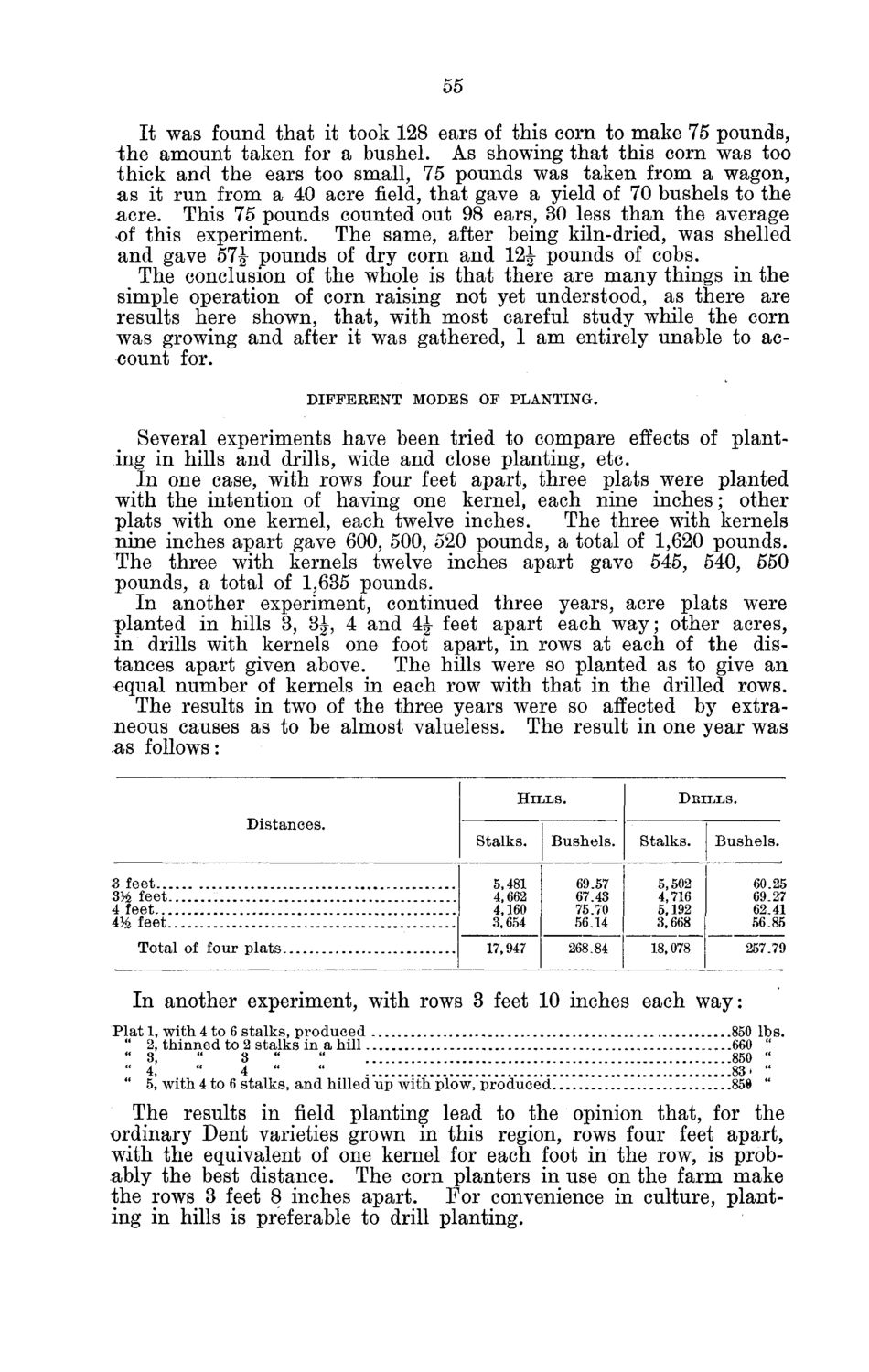| |
| |
Caption: Board of Trustees Minutes - 1880
This is a reduced-resolution page image for fast online browsing.

EXTRACTED TEXT FROM PAGE:
55 It was found that it took 128 ears of this corn to make 15 pounds, i h e amount taken for a bushel. As showing that this corn was too thick and the ears too small, 15 pounds was taken from a wagon, as it run from a 40 acre field, that gave a yield of 70 bushels to the acre. This 15 pounds counted out 98 ears, 30 less than the average of this experiment. The same, after being kiln-dried, was shelled and gave 57 J- pounds of dry corn and 12^ pounds of cobs. The conclusion of the whole is that there are many things in the simple operation of corn raising not yet understood, as there are results here shown, that, with most careful study while the corn was growing and after it was gathered, I am entirely unable to account for. D I F F E R E N T MODES OF PLANTING. Several experiments have been tried to compare effects of planting in hills and drills, wide and close planting, etc. In one case, with rows four feet apart, three plats were planted with the intention of having one kernel, each nine inches; other plats with one kernel, each twelve inches. The three with kernels nine inches apart gave 600, 500, 520 pounds, a total of 1,620 pounds. The three with kernels twelve inches apart gave 545, 540, 550 pounds, a total of 1,635 pounds. In another experiment, continued three years, acre plats were planted in hills 3, 3J, 4 and 4^ feet apart each way; other acres, in drills with kernels one foot apart, in rows at each of the distances apart given above. The hills were so planted as to give an equal number of kernels in each row with that in the drilled rows. The results in two of the three years were so affected by extraneous causes as to be almost valueless. The result in one year was as follows: HILLS. DKIKLS. Distances. Stalks. 5,481 4,662 4,160 3,654 17,947 Bushels. 69.57 67.43 75.70 56.14 268.84 Stalks. 5,502 4,716 5,192 3,668 18,078 Bushels. 60.25 69.27 62.41 56.85 257.79 3 feet 3% feet 4 feet 4J6 feet Total of four p l a t s In another experiment, with rows 3 feet 10 inches each way: Plat " " " " 1, w i t h 4 to 6 s t a l k s , p r o d u c e d 2, t h i n n e d to 2 s t a l k s in a hill 3, " 3 " " 4, " 4 " " 5, w i t h 4 to 6 s t a l k s , a n d hilled u p w i t h plow, p r o d u c e d 850 lbs. 660 " 850 " 83* " 858 " The results in field planting lead to the opinion that, for the ordinary Dent varieties grown in this region, rows four feet apart, with the equivalent of one kernel for each foot in the row, is probably the best distance. The corn planters in use on the farm make the rows 3 feet 8 inches apart. For convenience in culture, planting in hills is preferable to drill planting.
| |